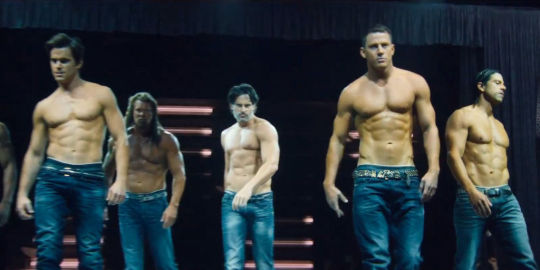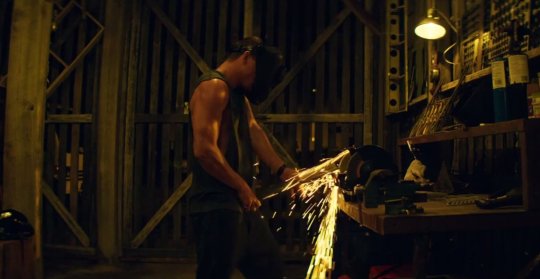Portrait of the Artist: Magic Mike XXL By K. Austin Collins
By Yasmina Tawil

To start his day, Jerry Mulligan, the hero of Vincente Minnelli’s 1951 musical An American in Paris, does a curious thing. He’s an ex-G.I. in Paris who lives in a studio above a restaurant and café. It’s a cheap spot—small, like his income, with what little room there is being overwhelmed by clustered bouquets of old paint brushes and studious stacks of better artists’ books. Starting the day at home means, first, giving himself a little room to maneuver.
And so, in order to work, he hoists his bed up to the ceiling with a pulley, grabs a towel from the clothesline above his bed, kicks a stool aside to make way for a fold-out table, corners an overlarge den chair to replace it with one smaller. He opens the patio doors and, taking in the sun for a moment, greets the day—then he hops back to business, setting the table, picking an outfit, setting out the coffee pot. This all happens in a matter of seconds, an automatic series of kicks, spins, and slaps, nimbly matched to the cosmopolitan orchestral swing of George Gershwin’s eponymous jazz suite. Mulligan does it without thinking. And Minnelli’s amused, astonished camera gently pans to and fro, eager to capture what happens in one long and, despite the cluttered setting, spacious image.
It is a ritual: practiced, well-worn and precisely choreographed, with no pretensions to appear otherwise. But Mulligan’s body goes through these motions with refreshed spontaneity, subsuming the practical need to get ready beneath his wary joy at the prospect of a new day and the unlikely possibilities it might provide. It seems he cannot help but infuse the ritual with feeling.
Mulligan may be a failed painter, but he is nevertheless, in the film’s view, an artist, a man who naturally inflects a routine as banal as tidying up his apartment with a sense of complex expression. He’s an artist by virtue of being played and designed by one: the dance-auteur Gene Kelly, whose peculiar talent as a choreographer and performer was for fashioning the everyday into an excuse for his characters’ creative impulses to run amok. That was his genius—he could make a dance, or a prop, out of anything.




